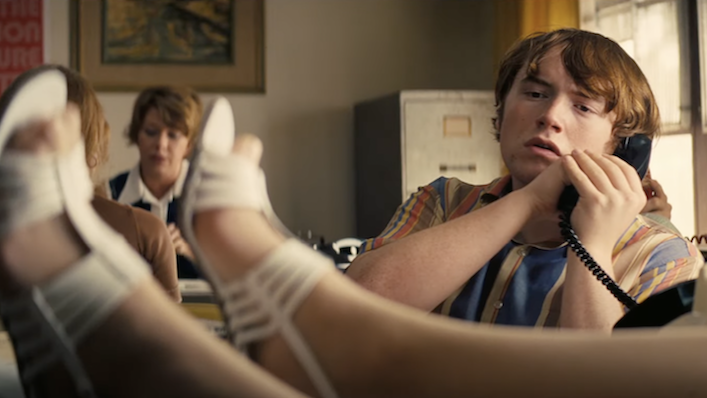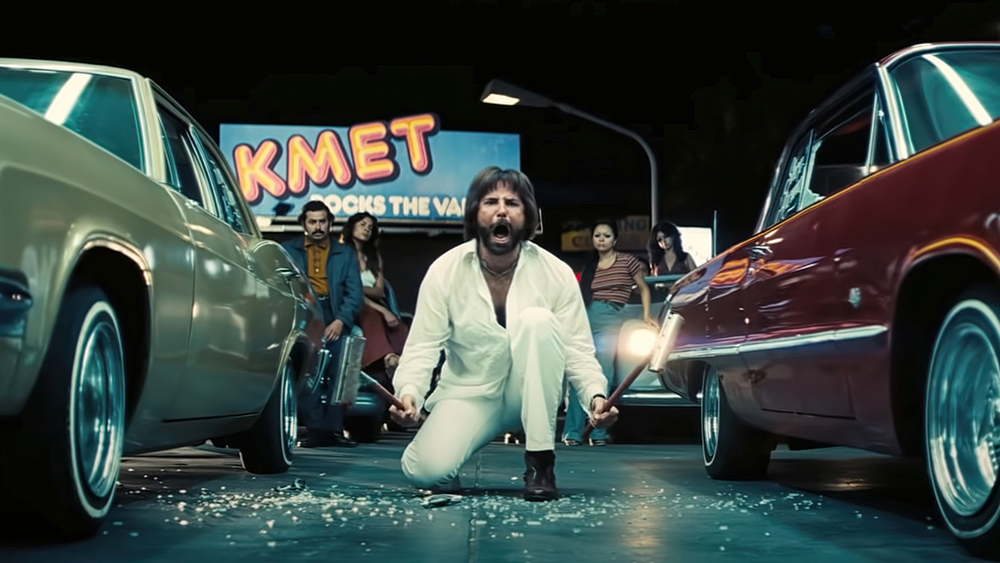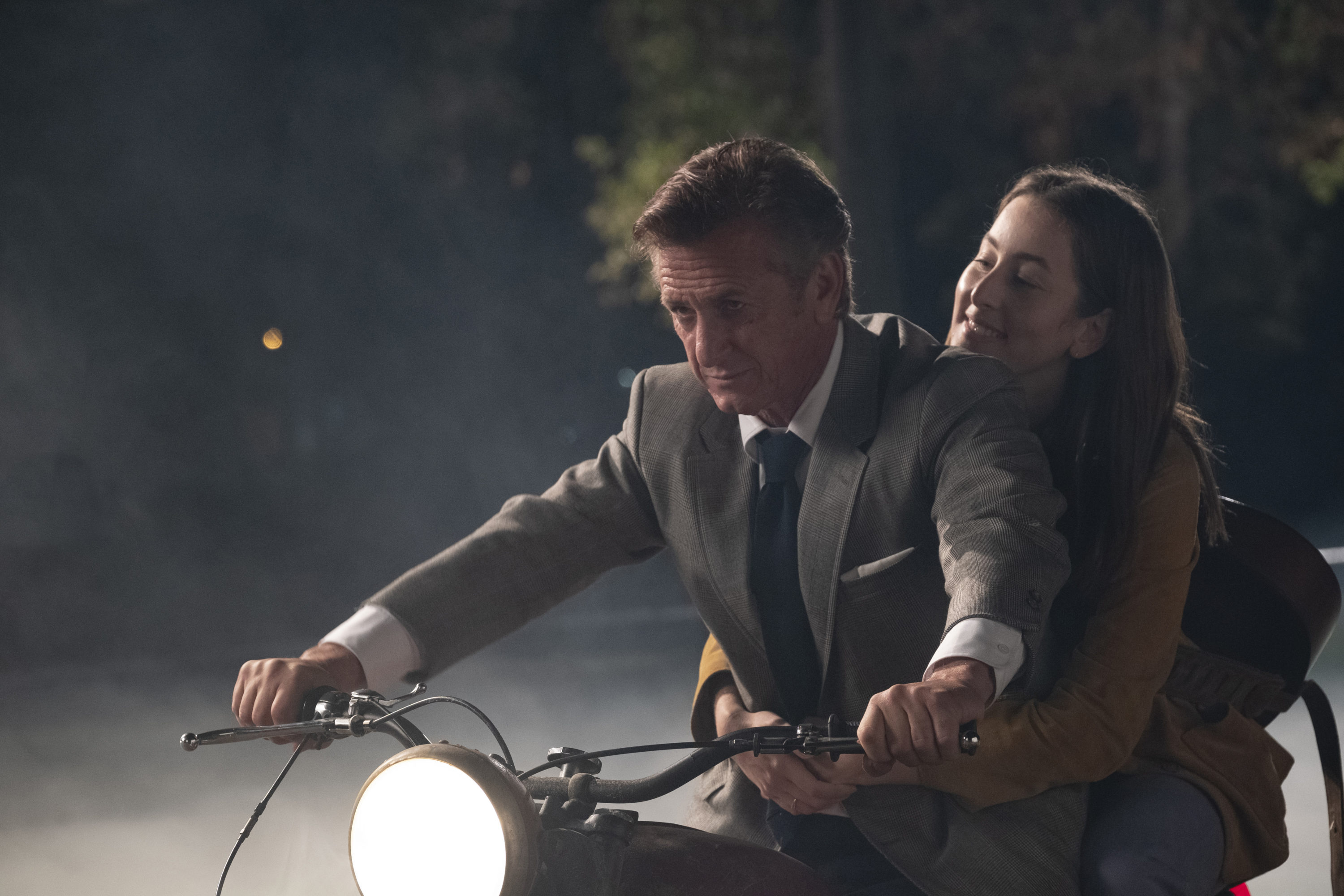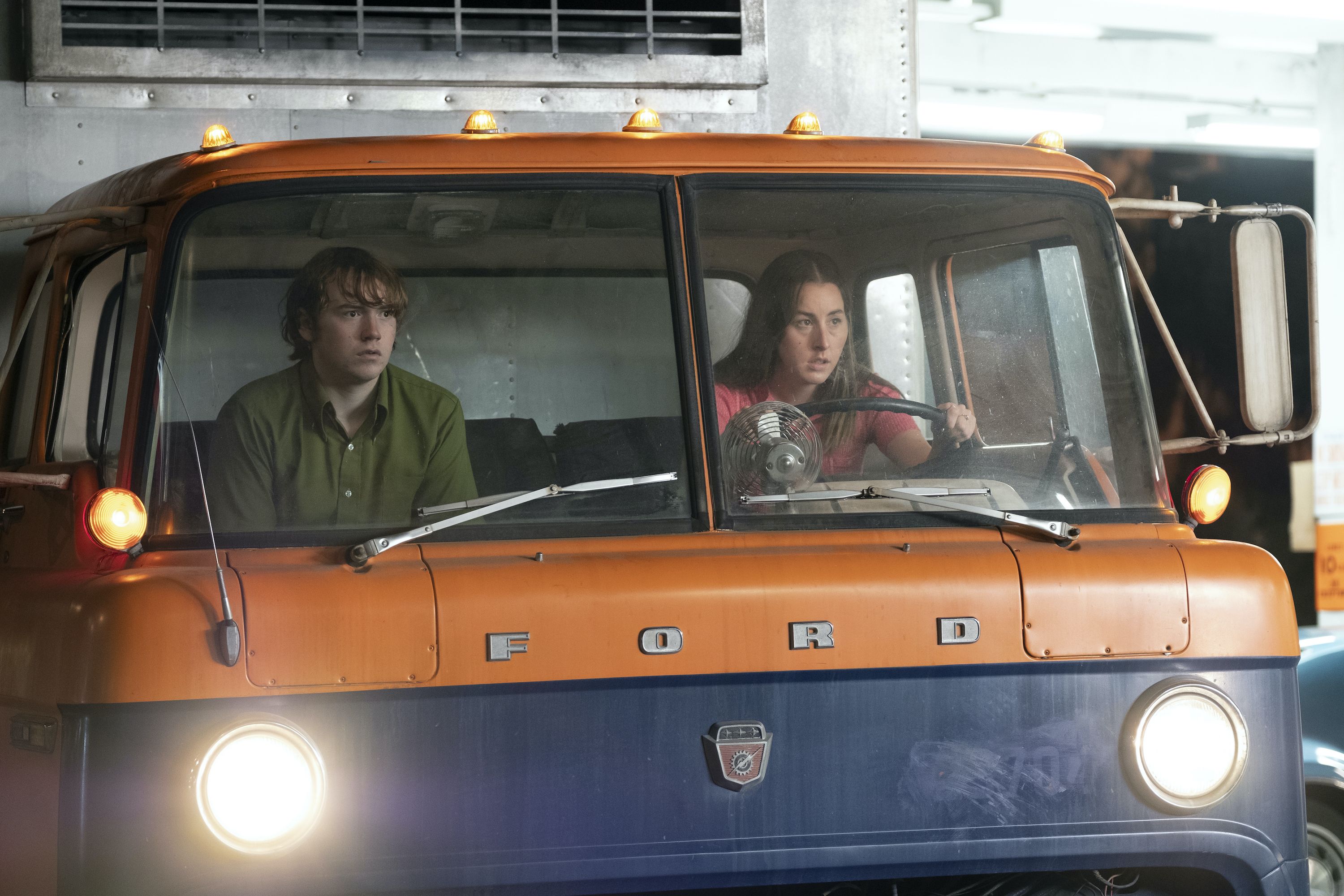Paul Thomas Anderson’s original name for his new movie was Soggy Bottom, and no, that doesn’t have anything to do with the bluegrass band in the Coens’ O Brother Where Art Thou? It’s part of a counterintuitive marketing campaign for the waterbed, an invention only just coming on the scene in this film’s Southern California of 1973. The character Alana, played by musician Alana Haim of the band Haim, rightly points out that the words “soggy” and “bottom” make you think of shitting your pants, and aren’t “sexy” in the slightest. This valuable feedback likely factored into the changing of the movie’s name to Licorice Pizza, after a Southern California record store.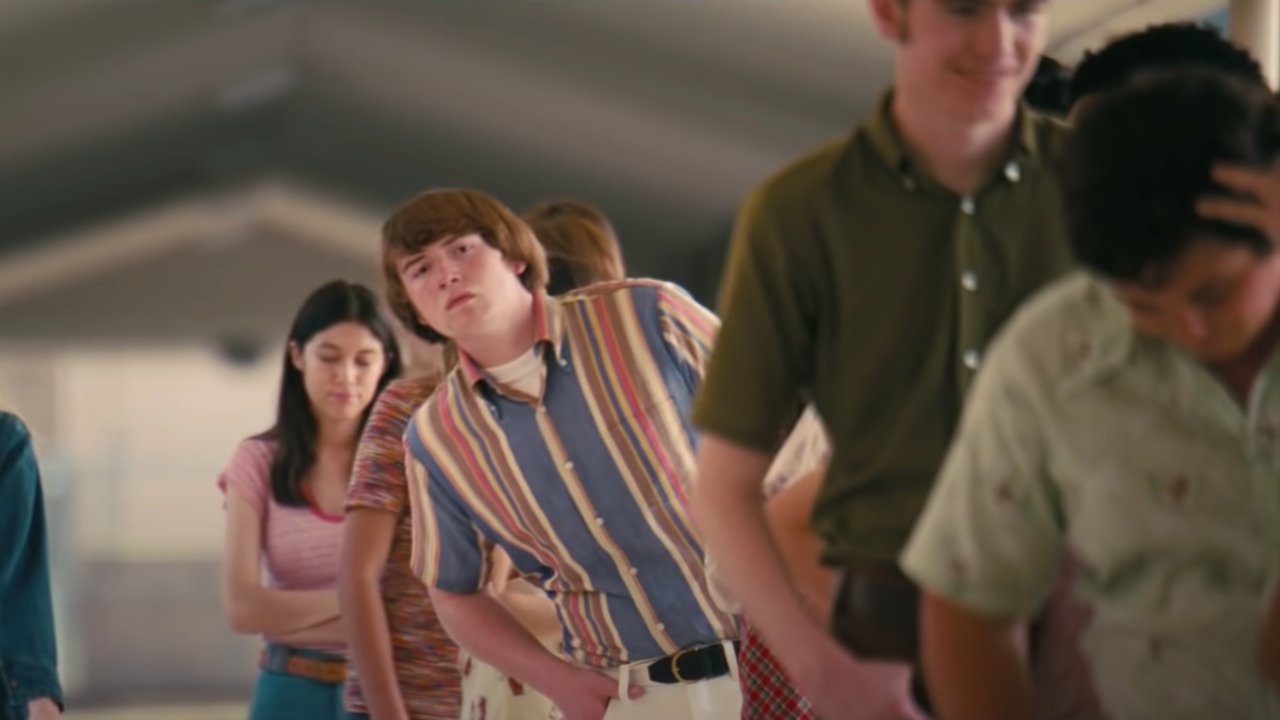
Licorice Pizza, as a title, also gives a better indication of what this film is about, or not about. No explanation for the title is ever given, whereas Soggy Bottom would have placed undue focus on one of the individual vignettes that make up Anderson’s film. Anderson chose the new title for what he has described as the Pavlovian way it activates his nostalgia. He effortlessly translates his own memories of the era to us – actually the memories of former child actor Gary Goetzman, since Anderson was only three in 1973.
The problem remains, though, that the film is not really about anything. It doesn’t have a story, and it eventually suffers from the lack of momentum of being a vibe more than a narrative. That leaves Licorice Pizza in the middle of the pack of Anderson’s peerless filmography, when it starts out as possibly one of his best.
Characters pop in and out of this story, such as it is, but our two constants are 25-year-old Alana and her 15-year-old friend and possible romantic interest, Gary Valentine (Cooper Hoffman, Philip Seymour’s son and making his acting debut). Don’t worry, the age difference is acknowledged up front, and nothing icky happens – at least not when Gary is still that tender young age. He’s pretty advanced for a kid who cannot yet drive a car, as he’s already had a career as a child actor and now runs his own public relations firm. He’ll have his eye on the waterbed industry and the pinball arcade industry before the story has run its course.
Alana is puzzled and intrigued by this confident young man who thinks he has a shot with a woman ten years older than him. Gary pursues Alana while she’s working for a company that arranges school photos, and thinks nothing of the fact that he can’t even pretend he’s not in high school. Letting her curiosity get the better of her, she meets him for dinner, not as a date – though the fact that she dresses up gives some indication of her own confusion on the matter. She’s as confused about her direction in life as Gary is certain of his own, but when it comes to taking the piss out of people, she stands tall.
Their “will they or won’t they” dynamic plays against a backdrop of absurd interludes, which include Gary’s appearance on a variety show, their delivery of a waterbed to the famous producer Jon Peters (Bradley Cooper), time spent working on a political campaign, and hilarious interactions with an agent (Harriet Sansom Harris) and the owner of a Japanese restaurant (John Michael Higgins) – who speaks to his ever-changing rotation of Japanese wives in an inexplicable broken English, as an attempt to compensate for the fact that he doesn’t speak Japanese. Gary’s and Alana’s families provide background colour.
Licorice Pizza is a great time, at least for its first hour. The man who speaks to his wife in “Engrish” is just one example of Anderson’s talent for presenting humour without giving it a full explication – we all know that if you have to explain a joke, it’s not funny, and by extension, sometimes the funniest things have no explanation. Why does this man speak broken English to his wife as a better means of communicating with her when neither of them speaks the other’s language? No one knows, but it puts its finger on something ineffable, depicting the essential character of this man when memory is a faulty source of truth on the matter.
There’s nothing faulty about the depiction of this era, which is so lived in – from the sets to the wardrobes to the hairstyles to just the way the characters look and act – you might assume someone made it in 1973 and unearthed it this year, kind of like Summer of Soul except for privileged white kids. Those white kids sure are funny, too. Everything about Hoffman’s demeanour as Gary tickles our funny bone and our sense of understanding of his particular circumstances, even if we don’t personally know a child actor turned waterbed salesman.
The real find here, though, is Haim. Making her acting debut alongside her real-life bandmates and sisters – who play her obnoxious sisters in the movie – Haim simply slays. She’s got a withering comment for any situation, but neither is this a cynic. Although she fiercely protects the outward projection of her maturity, a necessary defense mechanism because she’s hanging out with a 15-year-old, there’s something fundamentally naïve and innocent about her. Both Alana and Gary are pictured running at different points in the narrative. That captures a certain carefree quality, to be sure, but more often it is deployed in a situation involving the perceived urgency of the moment – an urgency only a teenager, or someone with that mindset, would translate into running at full speed.
Anderson’s own maturity is on display here. As a younger filmmaker, he was distracted by ostentatious techniques that demonstrated his mastery of the form. While those were always impressive, they were a bit like a kid showing off – a bit like Gary Valentine, maybe. Now in his fifties, Anderson just wants to tell a good story, even and perhaps especially if the contours of that story don’t conform to our expectations – if they’re as loose as Anderson’s technique was once rigid. His camera placements are still first rate, but now they demonstrate a sort of intimacy with the characters, a sort of sidelong glance approach to filmmaking that approximates the vagaries of memory.
Why, then, is Licorice Pizza not a bigger success? This movie proves it’s possible to have too much of a good thing. Although the cultural moments all have a wonderful specificity – an oil embargo factors into the plot, and into an exciting sequence in which Alana pilots a truck downhill without fuel while being pursued by a crazed maniac – their lack of adding up to anything eventually fritters away the viewer’s good will. The 133-minute running time is not a problem in and of itself, but its lack of momentum toward a clear conclusion leaves you wondering how much time might be left, and how many more of these precisely realised moments we really need. If Anderson is still learning and fine-tuning as a filmmaker, maybe one of his future epiphanies will be that less is more. Especially when the less is as good as Licorice Pizza.
Licorice Pizza is currently playing in cinemas.
